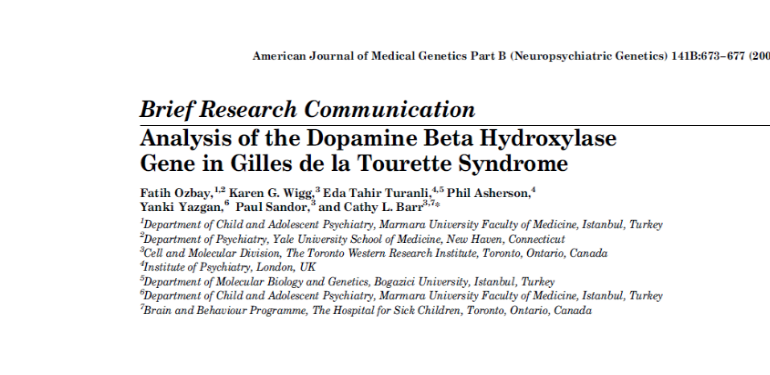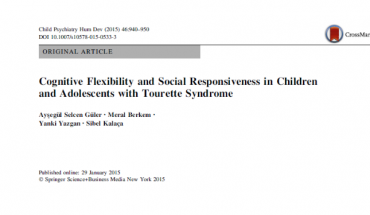Numerous lines of evidence support the role of the catecholamines in the development of tics and Gilles de la Tourette syndrome (GTS). Dopamine-β-hydroxylase (DBH) is the key enzyme in the conversion of dopamine to norepinephrine and the alleles of several polymorphisms of the DBH gene are correlated with individual variation in serum levels of the enzyme. We investigated the genetic relationship of the gene for DBH to GTS in two samples, one collected in Canada and one collected in Turkey. In total 106 affected probands and siblings in 71 nuclear pedigrees and 40 affected individuals and 71 family members in five multi-generational pedigrees were genotyped for three polymorphisms in the DBH locus. In the Canadian pedigrees we found no convincing evidence for linkage either in the multi-generational pedigrees or association in the nuclear families. We found significant evidence for association in the Turkish pedigrees (n = 29) for the 19 bp insertion/deletion markers; however, there was no supporting evidence for association with the other two markers. Based on the small sample size and low number of informative transmissions, we conclude that the results from the 19 bp insertion/deletion markers may be a chance false positive finding. These findings, in total, suggest that the DBH locus is unlikely to be a major gene influencing the susceptibility to DBH.
KEY WORDS: Tourette Syndrome; dopamine beta hydroxylase; association; transmission disequilibrium test; genetics; DBH


